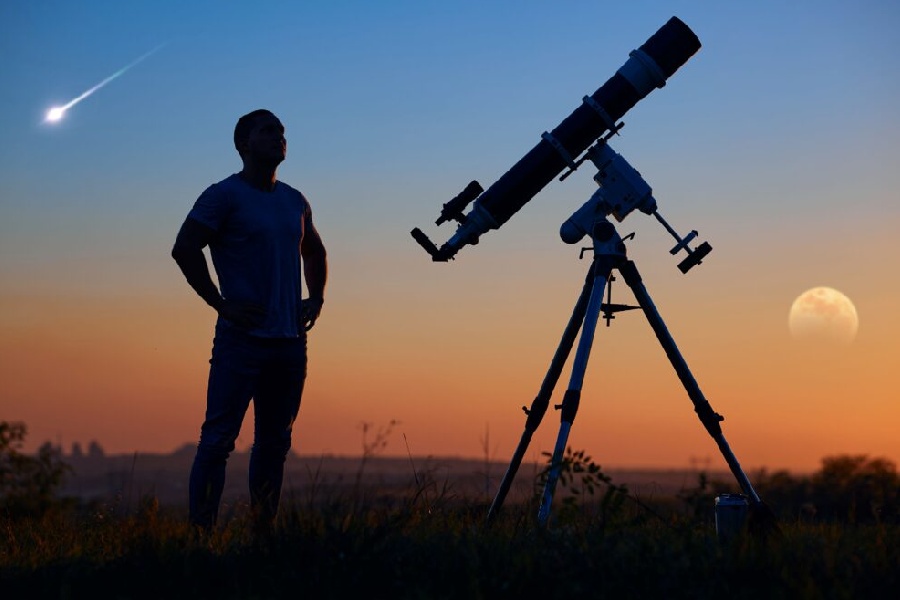That shiny new telescope tempting you with promises of majestic views – but what could go wrong? Even quality telescopes have their share of troubles that can impact performance. From minor issues of alignment and software glitches to serious optical defects, understanding common telescope problems helps mitigate frustrations.
In this guide covering what are telescope problems, we’ll delve into frequently faced equipment challenges at all levels. Get tips on basic troubleshooting and minor adjustments for do-it-yourself resolutions.
We’ll also cover when professional servicing may be needed for complex problems involving hardware damage or flaws.
By learning typical telescope issues users encounter and their solutions, you’ll know what to expect and handle problems confidently if they arise. Let’s equip you to get the most out of your stargazing companion.

Telescope Problems
Telescopes are precision optical instruments. So, they can develop a variety of issues that negatively impact performance and viewing experience.
Common problems include improper alignment, resulting in blurry images, software and electronics malfunctions, and optical defects like spherical aberration, causing distorted views.
Additional issues are mount and gear failures leading to unsteady targeting, damaged coatings decreasing light transmission, and problems with focus or movement mechanisms.
Factors like environmental conditions, aging, transportation mishandling, and more can also create problems over time. Basic issues can often be fixed with manual adjustments, troubleshooting, and maintenance, but more complex faults may require professional servicing and repairs.
Optical Aberrations
Common optical aberrations
Optical aberrations are common imperfections in telescopes. All lenses show defects to some degree. These flaws prevent forming a sharply defined image.
Chromatic aberration stems from different wavelengths of light refracting differently, manifesting as color fringing in images. Spherical aberration originates from the round lens shape unevenly bending light beams, reducing sharpness and contrast.
Impact on image quality
Aberrations can distort image shape or clarity in telescopes. Chromatic aberration causes different colors to focus separately. This leads to color fringing along edges. Spherical aberration arises from sphere-shaped lenses bending light unevenly.
Coma occurs off-axis, making stars appear comet-shaped. Astigmatism gives stars stretched-out lines at angles. Aberrations blur images and muddy details sought by observers.
Diffraction Limit
Diffraction arises from light bending around obstacles and spreading. Telescopes have a diffraction limit to their sharpness and resolution. Finer details lie below this limit and blur together.
This boundary depends on the telescope aperture size and wavelength of light. Larger apertures allow the detection of finer details before diffraction blurs features together.
Overcoming limitations
Large telescopes gather more light waves, leading to a higher resolution. Adaptive optics uses deformable mirrors to counter wave distortions. But costs limit widespread diffraction solutions. Innovations steadily improve telescopic performance toward the boundaries set by diffraction.
Light Pollution
Impact on observations
Artificial light scatters into the night sky. This veils celestial objects sought through telescopes. Stargazing from cities or bright areas suffers greatly.
Light pollution washes out all but the brightest stars and planets. Deep sky objects become impossible to spot and study. It inhibits scientific research and public access to space wonders.
Minimization tips
Use telescopes with large apertures from darker rural locations. Transport telescopes far from stray artificial lighting. Limit light beams shining upward or sideways. Use fully shielded fixtures directing light downward. Choose warmer, dimmer bulbs where possible over bright white lighting.
Atmospheric Turbulence
Effects on performance
Turbulence from weather and temperature variations refracts telescope light. This causes image blurring, distortion, and wavering, aptly called “seeing”. Moments of stability are rare. Views constantly shift or blur, limiting resolution. Seeing quality depends on location and weather fluctuations disrupting optical pathways.
Mitigation solutions
Adaptive optics utilizes deformable mirrors to rapidly compensate wavefront distortions. However, this complex technology is prohibitively expensive for most telescopes, currently limiting widespread turbulence relief.
Site in high altitudes or space to surpass atmospheric boundaries. New laser guide star methods show promise for improving correction without bright reference stars.

Conclusion
We hope following along on this journey delving into various telescope problems, has provided useful insights and perspectives. As we have discovered, even quality telescopes contend with unavoidable optical aberrations impacting image clarity.
In addition, all telescopes face the diffraction limit barrier to resolution along with practical hurdles like light pollution and atmospheric turbulence that can frustrate astronomers. Though ongoing innovations aim to minimize telescope problems through clever engineering and novel solutions, challenges remain.
By understanding the obstacles facing telescopic observations, both professional and amateur, we gain valuable perspective. This appreciation covers the significant accomplishments of telescopes in capturing striking cosmic images and broadening scientific understanding, even while contending with recurring issues.
Equipped with this knowledge, may your own celestial explorations reach new horizons armed with appropriate expectations and helpful strategies.
